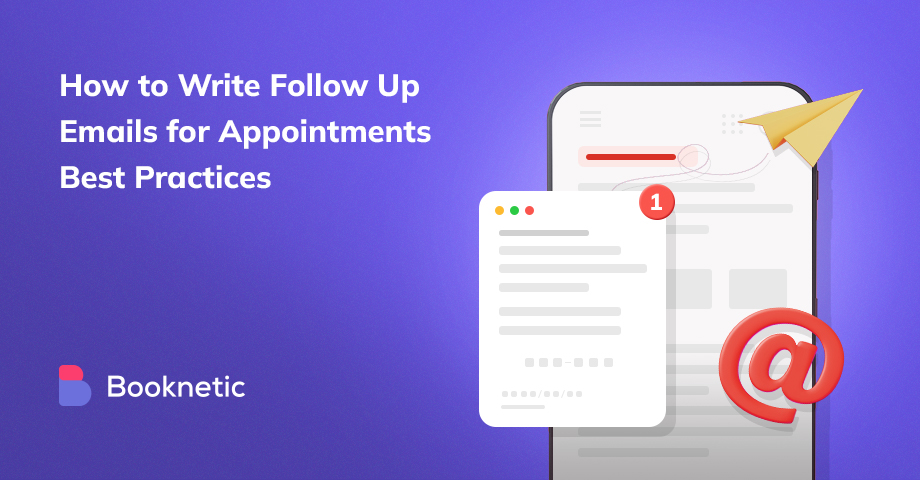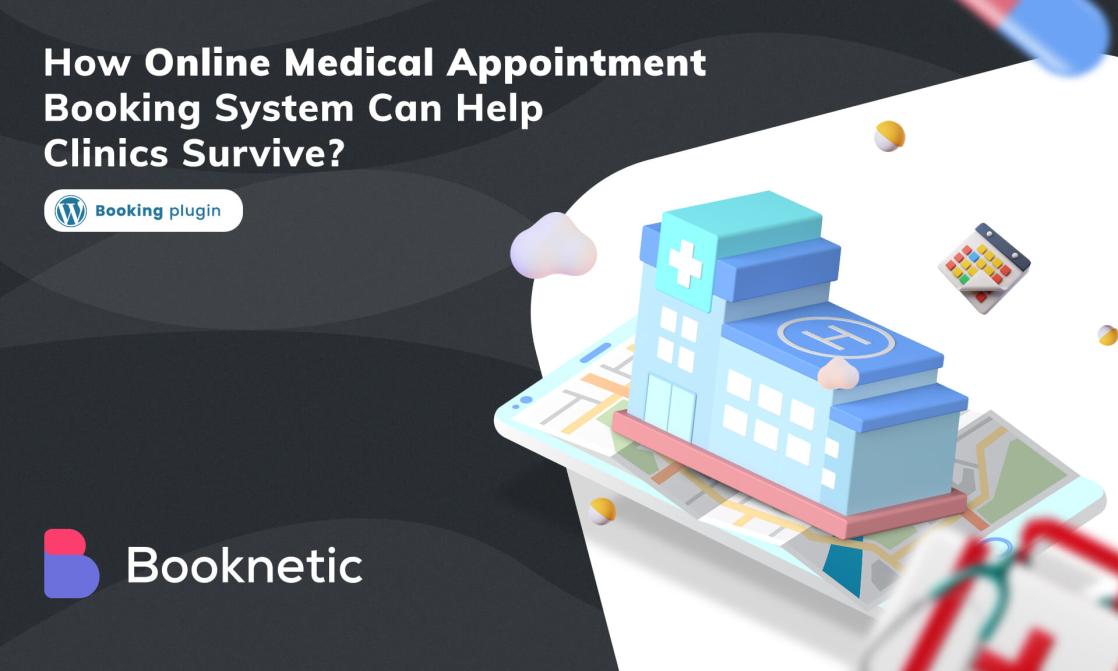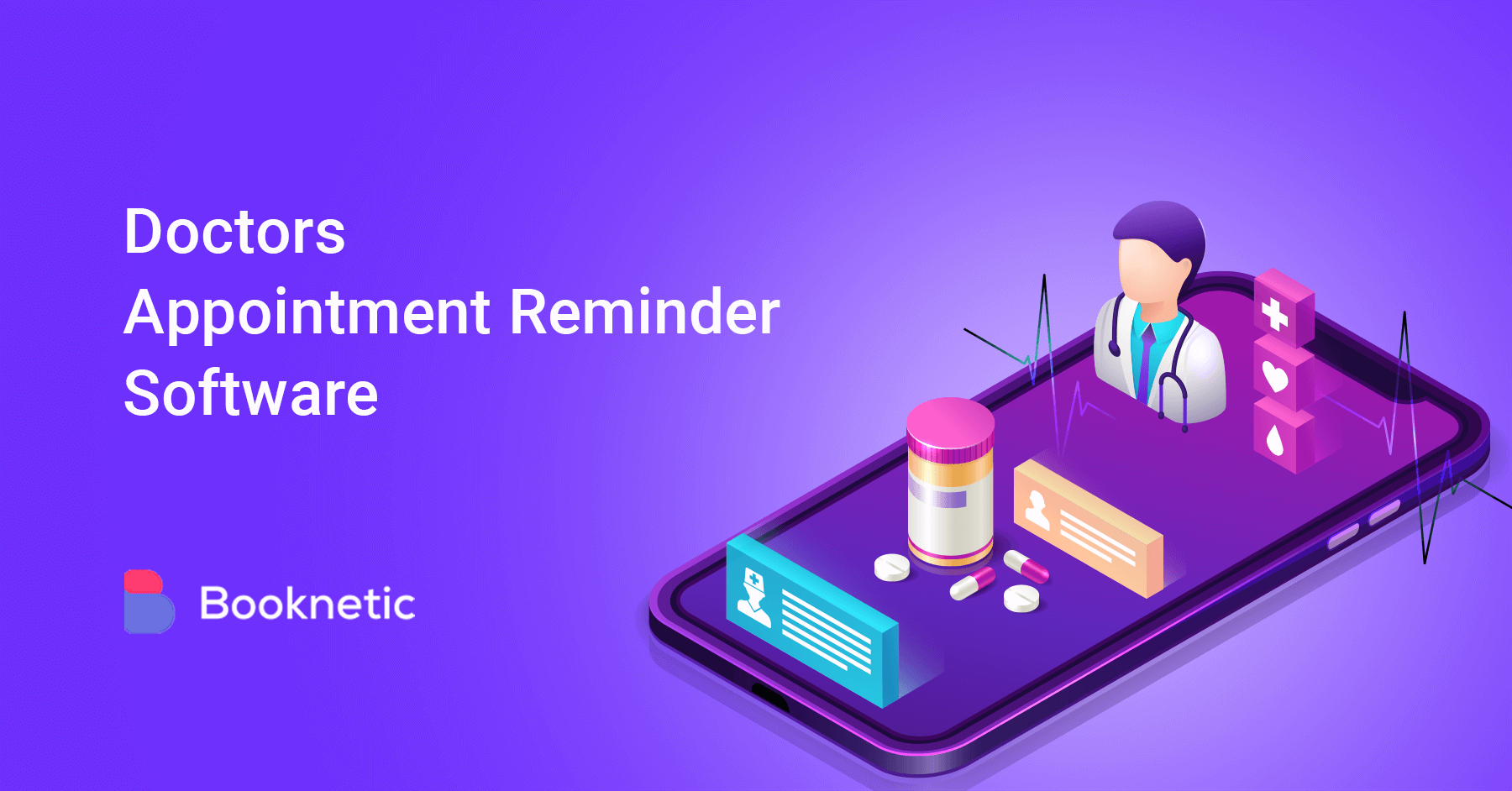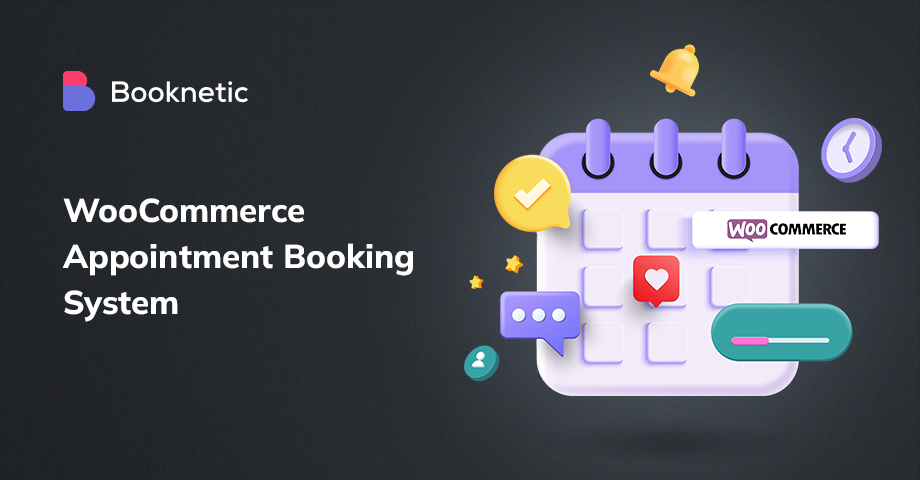
Do you often have to schedule appointments? If so, then you know the importance of follow-up emails for appointments. This blog post will discuss some best practices for writing follow-up emails after scheduling an appointment. You can ensure that your appointment goes smoothly and don't lose any business by following these tips!
What is a Follow Up Email?
.jpg)
A follow-up email is an email you send after you have already contacted a person. It is generally sent after some time has passed to ensure that the person is still interested in what you have to offer.
For example, if you are a salesperson and you contact a potential customer, you may want to follow up with them a week later to see if they are still interested in your product.
It is necessary to stay connected with customers in appointments to reduce no-shows and raise attendant rates.
Why Follow Up?
A follow-up email shows you're organized, detail-oriented, and interested in the meeting. It also allows you to provide any additional information that may have come up since the appointment was made. There are infinately more benfits of sending a reminder message and following up, but the most important point is that it gives you another chance to sell yourself or your product.
When Should You Follow Up?
The best time to follow up on an email is one to three days after you had the previous contact. If you don’t hear back by then, send a second email.
You can mention that you wanted to make sure they saw your previous message and ask if there is anything you can help with.
Follow-up emails before appointments are types of reminder messages for a meeting where you mention the key details for attending.
If the goal of your email was to schedule or reschedule a meeting, give them a few dates and times to choose from. That also includes necessary information that might be needed during the course of the appointment.
Plus to prior follow-ups, you can also send follow-up emails after the meetings or appointments. In this case, consider adding the key appointment notes and your important request for the upcoming appointments.
The rule of thumb is always to send a final follow-up. You might not expect an upcoming meeting or appointment with the prospect, but good communication builds lasting customer relations.
For example, thank them for their time and express your interest in working together.
If you managed to get a response and successfully completed the appointment, take the time to send a thank you email and send a feedback reques with a post-appointment survey to collect further information.
How Many Follow-Up Emails Should You Send?
This is a difficult question to answer. It depends on many factors, such as the type of appointment, the importance of the meeting, and the relationship between you and the person you are emailing.
A good rule of thumb is to send one follow-up email for every week that has passed since the original appointment. If your appointment was two weeks ago, you should send two follow-up emails. You can set up automated follow-ups using email software like MailerLite or Brevo, to reduce the manual workload for this task.
Of course, this is just a general guideline. You may need to adjust it and add your personal touch depending on the circumstances. If you are unsure how many follow-up emails to send, keep them to 2 follow-ups.
How to Write Follow-up Emails for Appointments?
.jpg)
Add Relevant Content
The first step to writing a reminder message is adding some context to your email. You want to jog the prospect’s memory about who you are, what company you represent, and how you met. A little bit of flattery never hurts, either.
For example:
It was great meeting you yesterday after your keynote speech at the ABC conference.
As we discussed, I’m with XYZ company, and we specialize in (whatever you do).
I’d love to continue our conversation about (the thing you talked about).
Keep it Short and Sweet
Even though follow-up emails for appointments are usually shorter than the original message, don’t underestimate their importance. A good follow-up email should be no longer than three or four sentences.
A good rule of thumb is to keep your email between 50-200 words. That may seem like a small range, but it forces you to be concise and get straight to the point. A summarizing tool can help you achieve this conciseness by reducing the length of your email while preserving the key points.
Be clear about what you want and why the recipient should care
If your email is too long, likely, the recipient will only read the first few lines and then move on. So make sure your message is concise and to the point.
Be clear about what happened during the meeting
Be clear about what happened during the meeting, what was agreed upon, and what are the next steps. You can even send summaries of previous appointments in newly generated confirmation emails. It shows you care and remember what happened last time and helps build customer loyalty. If writing concise and professional emails feels challenging, consider exploring paper writing help from esseyservice.com. Their expertise can assist in crafting effective communication strategies, whether it’s for follow-up emails or even a well-structured business essay.
Whether to follow up or not
If you had an appointment with someone and it went well, be sure to follow up with a clear email summarizing what happened and reiterating any important points that were made. It helps nurture relationships even further.
This will help solidify the meeting in both of your minds and ensure everyone is on the same page moving forward. Plus, it'll make you look professional and detail-oriented - always a good thing! Here are some tips for writing great follow-up emails after appointments.
Thank the Person for Their Time
Even if the meeting didn’t go well, you should always thank the other person for their time. This is just good manners. And, it might come in handy down the road, even if things didn’t work out this time around.
For example:
Thank you for taking the time to meet with me yesterday. I appreciate your insights and feedback.
Make It Personalized
One of the best ways to make a follow-up email effective is to make it personalized. This doesn’t mean that you have to write a long, detailed message. But, you should avoid using generic phrases like “let’s keep in touch” or “I’ll give you a call soon.” and add a personal touch to feel like you spent time crafting the message.
Try to reference something specific that you talked about during the meeting. This could be an upcoming project, a mutual connection, or even just a shared interest.
For example:
It was great meeting you yesterday after your keynote speech at the ABC conference. As we discussed, I’m with XYZ company, and we specialize in (whatever you do). I’d love to continue our conversation about (the thing you talked about)…
Use a CTA
No customer contact should be left without a clear call to action. Even if it is a kind follow-up, you still need to direct the recipient to some area. Include a specific call to action so the person knows what you want them to do next.
Tell recipients exactly what you want them to do next, whether you’re asking for a meeting or requesting feedback. And if you include additional information, make it easy for them to find by using hyperlinks.
End With a Thank You
Last but not least, don’t forget to say thank you. A follow-up email is another opportunity to build relationships and show your appreciation. So take the time to express your gratitude, whether it’s for their time, feedback, or business.
Here are some additional tips for writing follow-up emails for appointments
• Personalize the email - Make sure to include the person's name in the email so they know it's not a generic message.
• Keep it relevant - Only include relevant information to the conversation you had with the person. In the case of appointments, it should only include the details about the booked appointments or conversations that happened during the appointment.
• Be helpful - Include any additional resources or information that might be helpful to the person.
Appointment Email Reminder for Follow-Up Example
.jpg)
1. Dear Name,
This is a friendly reminder confirming your appointment with X on 04/25/20/20 at 15.00 PM. Please try to arrive 10 minutes early and bring your ID or passport.
If you have any questions or need to reschedule, please call our office at 123-4678-229. Otherwise, we look forward to seeing you on 2022/08/12, 11:00. Good day!
Best regards,
[Name, Surname]
2. Hey Name,
This is just a quick reminder for your upcoming appointment on 04/25/20/20 at 15.00 PM.
Please reply to confirm this appointment. You can call our office at 678-8330-22 anytime if you’d like to reschedule.
See you soon!
Best regards,
[Name, Surname]
3. Dear Name,
I'm writing to follow up. I'm not sure what our next step is.
If so, let me know what makes sense to you as the next step.
Thanks for your input.
Best Regards,
[Name, Surname]
4. Dear Customer,
I’m writing to follow up on my email. I didn’t hear back from anyone on the team. If it makes sense to talk, let me know what your calendar looks like.
If not, who is the appropriate person for me to talk to?
Thanks for your help,
Best Regards,
[Name, Surname]
Conclusion
Now that you know how to write follow-up emails for appointments, it’s time to put your skills into practice. Remember to personalize each email and make sure the content is relevant to the recipient. And most importantly, be persistent! Persistence pays off when it comes to sales. Need some help getting started? Visit the Booknetic blog for more tips on managing your appointment booking funnel.
Sign up for our newsletter
Be the first to know about releases and industry news and insights.
Booknetic is a simple yet powerful plugin for accepting online bookings & payments on your WordPress site.



